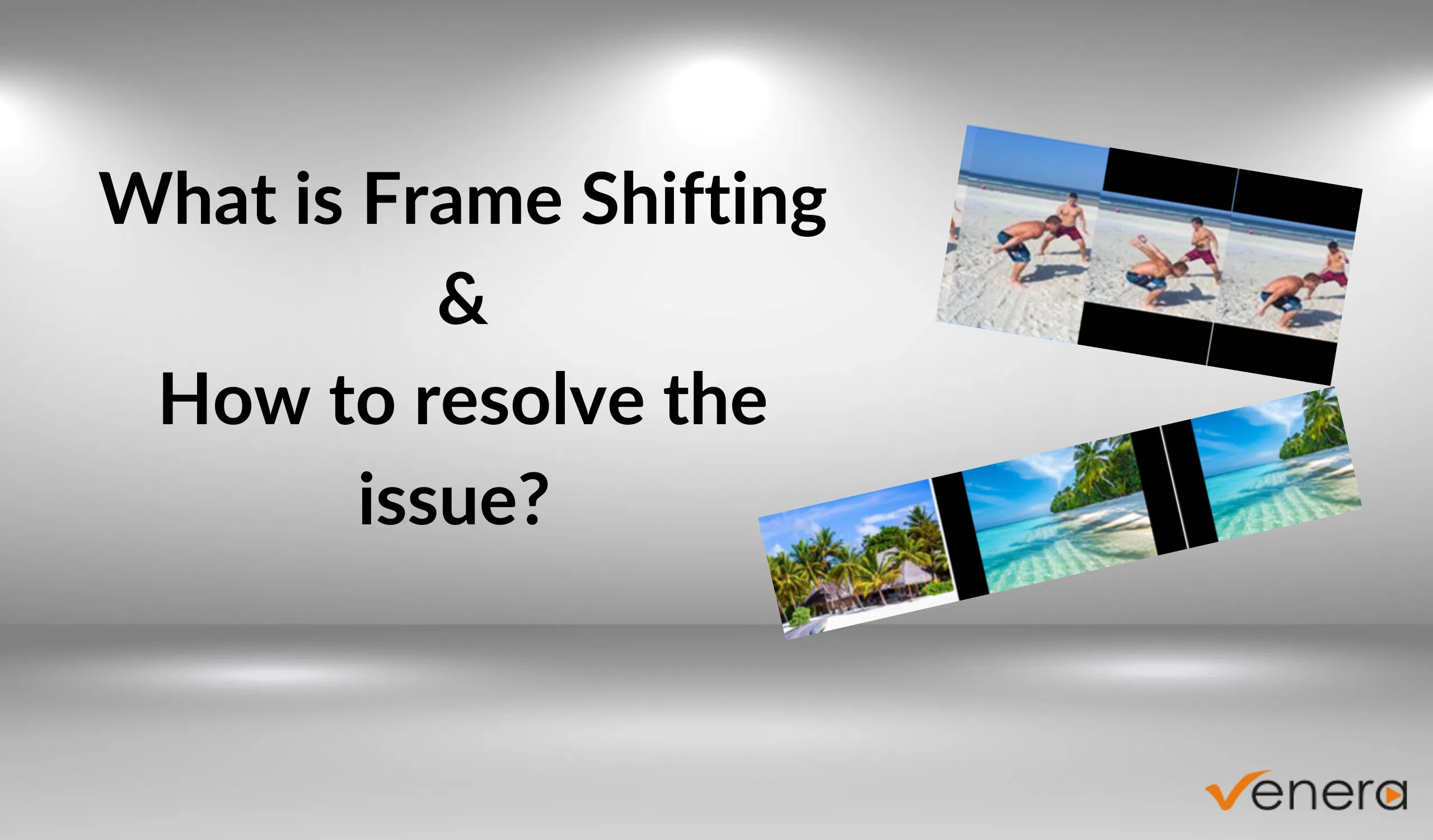
13 Dec Frame Shifting or Blanking Shift Issue Unveiled
Precision and quality are supreme in the realm of video content. Any disruption to the seamless viewing experience can detract from the intended message and artistic expression. One persistent issue that hampers the quality of experience is the elusive “Frame Shifting” or “Blanking Shift”. In this article, we will explore the ins and outs of frame shifting, its impact, and the crucial role of Video Quality Control software in mitigating and resolving this challenge.
Understanding Frame Shifting
Frame shifting, also known as blanking shift, is a technical anomaly where the active image within the video frames has intermittent horizontal and/or vertical displacement. This issue manifests as a distortion in the height/position of the letterbox or the width/position of the pillar box areas within the frame.
The active image represents the central portion of the video excluding the black bars on the sides, such as letterbox or pillar box bars. The central content area is what viewers focus on, and it may be surrounded by black bars on the sides which maintain the intended aspect ratio of the video, ensuring it displays correctly on screens with different dimensions. However, when frame shifting occurs, the active image appears to move or jump across the frames unpredictably creating an abrupt disruption in the viewing experience.
Frame Shifting can significantly impact the quality of the video and may be disorienting for the viewers. It’s important to note that Frame Shifting is usually not a part of the creative intent; rather, it is an unintentional technical flaw. To address this issue, meticulous attention to detail is required at editing stage to maintain the integrity and professional quality of the video content.
Frame alignment plays a crucial role in mitigating the effects of frame shifting during editing. By ensuring precise alignment of the active image within video frames, frame shifting-related distortions, such as mispositioned letterbox or pillar box areas, can be minimized or eliminated. Proper frame alignment helps maintain the intended aspect ratio, eliminates visual disruptions, and provides a seamless viewing experience for the audience.
The issue must also be validated during the QC stage before content is delivered to the next stage.
Below are the images showing frame shifting:
Impacts of Frame Shifting on Video Quality
Visual Disturbance and Impact on Creative Intent and Storytelling
Intense Frame Shifting may lead to significant visual disturbance during playback. Abrupt movements of the active image can disorient viewers and disrupt visual storytelling, diverting attention to quality issues instead of the intended narrative and hindering the flow of the story.
Image Misalignment
Frame Shifting leads to misalignment of the visual content within the frame. It prevents the frame from completely filling the intended active image area.
Precision and Consistency
Frame Shifting directly affects the precision and consistency of the video. It compromises the accuracy and alignment of the frames, resulting in a loss of quality and diminishing the overall professional appearance of the video asset.
Causes of Frame Shifting
- Editing Errors: Frame shifting can occur during the editing process due to various reasons. One of the causes is mistakes in editing techniques, specifically related to the alignment and placement of the active image within the frame. Unintentional alterations to properties like position can result in frame shifting, causing the active image to shift within the frame.
- Aspect Ratio Conversion: Incorrect or inconsistent aspect ratio conversion during editing can cause frame shifting. If resizing is not executed accurately, it can disrupt the positioning of the active image.
- Cropping and Resizing Issues: Improper cropping or resizing of video content can result in frame shifting. Any misalignment during these processes can lead to an unintended shift of the active image.
- Transitions Between Videos: Frame shifting may occur when transitioning between different video sources with varying aspect ratios, if these transitions are not handled seamlessly. Sudden changes in aspect ratios can disrupt the consistency of the active image.
The Role of Media QC Software: A Solution for the Frame Shifting Issue
In the fast-paced world of video production, manually identifying and rectifying “Blanking Shift” or “Frame Shifting” problems can be arduous and time-consuming. One must meticulously inspect the entire sequence of frames to ensure they were rendered and replaced correctly. Any incorrectly placed or rendered frames need to be corrected to fix the Blanking Shift.
This is where Video Quality Control software such as Pulsar and Quasar comes to the rescue. They are designed to automatically detect Blanking Shift (or Frame Shift) and a wide range of other quality issues in video content. It automatically scans the video for anomalies, ensuring that the active image remains consistent throughout the content. By employing an automated QC software, media professionals can streamline their quality control processes, saving time and resources, and ensuring a seamless viewing experience for their audiences.
Conclusion
In conclusion, Blanking Shift is a technical issue that significantly impacts the quality and viewer experience of video content. Preventing and addressing this issue requires precision during the editing process and the use of reliable Media QC software such as Pulsar/Quasar.. By actively identifying and rectifying Blanking Shift, content creators and distributors can ensure their videos are technically sound, maintaining the artistic integrity of their work and providing audiences with a distraction-free viewing experience.



